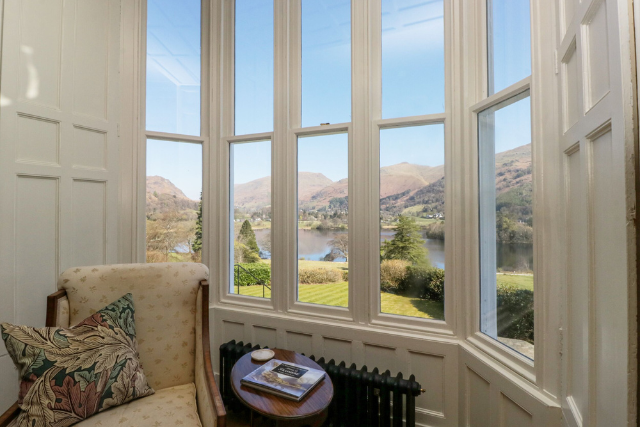If you are considering buying a property to holiday let, there are additional costs you will need to factor into your purchase. Here’s the GOV.UK info on Stamp Duty Land Tax
Read on and we will explain more about what Holiday Let Stamp Duty is…

Huntingstile South near Grasmere Ref. 1169919
What is Stamp Duty?
Stamp Duty or Stamp Duty Land Tax (SDLT) is a cost a buyer must pay when purchasing a residential property or a piece of land in England and Northern Ireland worth more than £125,000. The charge works on a tiered basis and is only applicable after the minimum threshold price is reached. This increases in relation to the value of the property thereafter.
Rates up to 31 March 2025 for a single property
- Up to £250,000 – 0%
- £250,001-£925,000 – 5%
- £925,001-£1.5million – 10%
- Over £1.5million – 12%
What are the changes to Stamp Duty?
Rates from 1 April 2025 for a single property
From 1st April 2025, Stamp Duty rates will be:
- Up to £125,000 – 0%
- £125,001-£250,000 – 2%
- £250,001-£925,000 – 5%
- £925,001-£1.5million – 10%
- Over £1.5million – 12%
So, for example:
In April 2025 you buy a house for £295,000. The SDLT you owe is calculated below:
- 0% on the first £125,000 = £0
- 2% on the second £125,000 = £2,500
- 5% on the final £45,000 = £2,250
- total SDLT = £4,750

When do you have to pay Holiday Let Stamp Duty on a second home?
Second home Stamp Duty rules are different, so if you already own one property and you’re buying another, you may need to pay the higher rates of Stamp Duty. If the second property is worth more than £40,000, you’ll have to pay Stamp Duty for second homes.
If you’re buying an additional residential property to the one you call home, including holiday lets, you may need to pay the higher rates of Stamp Duty. These apply:
- If the residential property you’re buying is above £40,000, and you already own a property worth £40,000 or more
- On additional properties that you part own, so long as your share is worth £40,000 or more
- If you own a property abroad and are looking to buy an additional property in the UK worth more than £40,000
- If you’re married or in a civil partnership, the rules apply as if you are buying the property together, even if you’re not. So, if your spouse has to pay the higher rates, you’ll have to pay them
The higher rates
The higher rates from 31 October 2024 to 31 March 2025
- Up to £250,000 – 5%
- £250,001 – £925,000 – 10%
- £925,001 – £1.5 million – 15%
- Above £1.5 million – 17%
The higher rates from 1 April 2025
- Up to £125,000 – 5%
- £125,001 – £250,000 – 7%
- £250,001 – £925,000 – 10%
- £925,000 – £1.5 million – 15%
- Above £1.5 million – 17%
So, for example, if you bought a holiday let from 1st April 2025 (when the nil-rate amount was reduced to £125,000) worth £290,000, this works out at:
£0-£125,000
- Standard rate: 0%
- Higher rate: 5%
- Total: 5% of £125,000 = £6,250
£125,001-£250,000
- Standard rate: 2%
- Higher rate: 5%
- Total: 7% of £125,000 = £8,750
Remaining £40,000 (£250,001-£290,000)
- Standard rate: 5%
- Higher rate: 5%
- Total: 10% of £40,000 = £4,000
This means that buying a £290,000 holiday let from 1st April 2025 will now cost you a total of £19,000 in Stamp Duty.
Use the SDLT calculator to give you an idea of how much tax you’ll pay. View more about the higher rates for second homes here
Am I exempt from the higher rate surcharge of Stamp Duty Land Tax?
There are some cases where you could be exempt from the higher rates of Stamp Duty as a holiday home owner. These include:
- If you buy a property with an annexe or an additional dwelling in the grounds (for example, a “granny flat”). You won’t have to pay the tax on this as a second home, so long as the main property is worth at least two thirds of the overall property price
- If you buy a plot of land without a property already on it (even if you plan to build a property on it at a later date), you won’t have to pay the higher rate
- If you buy a mixed-use property as your additional property (e.g. a restaurant, shop or office with a flat above), you will be exempt
- If you buy a property that can only be used as a holiday let (see above)
Holiday Let Use-Only Exemption: The exemption for properties that “can only be used as a holiday let” is not automatic. It depends on planning restrictions or commercial classification. Check with HMRC or a solicitor whether the exemption applies to you before you buy.
If you need information about Furnished Holiday Let and Tax, read our blog page for helpful advice
Need help or advice with the above?
Got a tax question? Zeal have a free helpline for Sykes and sister brand owners, get in touch via Sykes@gozeal.co.uk and as a Sykes and brand owner you have the benefit of exclusive 10% discount on standard fees.
Considering buying a holiday let? Get in touch to find out more
The Lakelovers team know the area like the back of their hand. If you’re interested in a chat about how we can help, complete the form below to request contact from our team, including a copy of our FREE Owner Guide, or call our Windermere Office on 015394 88855 or email newowners@lakelovers.co.uk
Disclaimer
The advice above is given by Zeal. Lakelovers can’t advise you on, and isn’t responsible for, tax matters in relation to your holiday let and the above should not be taken as such, rather as a prompt of the issues involved for further consideration. As always, please read the relevant laws, regulations and guidance and seek advice from external experts where you require it. Lakelovers hopes that by pointing you in the direction of an expert in the field, it’s starting you off on the right foot, and you can read into this matter further and seek your own advice from Zeal, or your chosen advisor, as and when you feel it’s needed. We cannot make any representations or warranties of any kind as to the competency, qualification, fitness for purpose, accuracy, reliability, suitability, or availability of Zeal’s offers, products or services. If you choose to enter into any arrangement for the supply of goods or services of a supplier listed in this newsletter or links, you do so entirely at your own risk. Any such arrangement is between you and the supplier. We are not a party to it. We shall not be liable for any loss or damage arising under or in connection with any such arrangement or any action or decisions you take or do not take as a result of reading the above or any loss suffered as a result.














